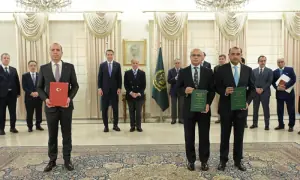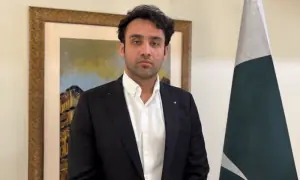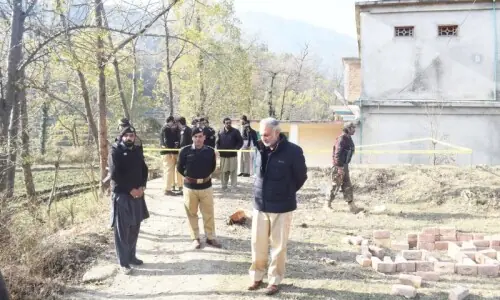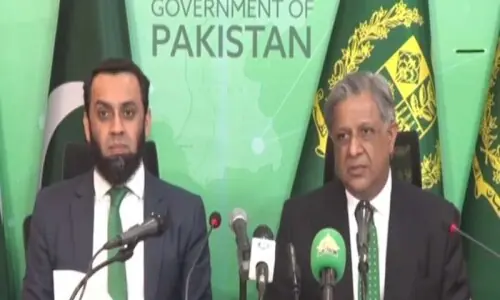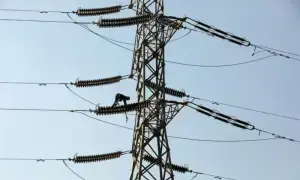THE upcoming UN Climate Change Conference in Dubai will be tackling tough questions on how to curb rising temperatures, control carbon emission spikes, develop efficient technological solutions, learn from the first Global Stock-take, and agree on a new roadmap to realise the Paris Agreement aims. Climate finance will be one of the toughest questions.
Globally, efforts to address climate change face a lack of financial resources to support developing nations reach the Climate Convention goals. The efforts are constrained by the absence of sufficient means of implementation, ie, financial resources. Already under debt distress, many developing countries are forced to spend most of their lean budgets on debt servicing, leaving little for sectors such as health and education, and diverting investment from climate action and environmental protection. Constricted fiscal space in these countries relegates the issue of global warming to the back-burner. So, they face serious challenges in combating climate change and expect injections of climate finance from multilateral funding avenues and bilateral donors.
While there’s no clear definition of what constitutes climate finance, it is accepted as a concept accommodating different types of financial contributions from a variety of sources and mechanisms. The Green Climate Fund, the Global Environmental Facility, the Adaptation Fund, and other regional and international financial institutions are set to mobilise and disburse funds. Bilateral arrangements from donors, public and private, supplement these funds. The Loss and Damage Fund, once operationalised, will be the latest addition.
Developing countries lack the funds to address climate change.
Some of these funding mechanisms are not well-endowed, while others are not replenished in a timely manner to meet the rising needs of climate finance in vulnerable countries. At a time when climate change threatens lives, the inadequacy and inaccessibility of climate finance hinders the Global South from taking urgent action while climate costs rise sharply.
A recent study published in the journal Nature Communications, found that the climate crisis resulted in average global costs of $143 billion per year for the last 20 years. For the year 2022, which saw multiple climate-induced disasters across the world, the direct cost estimate was $280bn due to storms, heatwaves, floods, droughts, and wildfires. Pakistan alone suffered a loss of $40bn in the same year due to heavy floods. The indirect costs of the long-term impact associated with extreme weather events — not considered in the study — would significantly push up these figures.
Vulnerable countries in Africa and Asia, in dire need of climate finance, are left exposed to the disproportionate adverse impacts of global warming, with 2023 being the hottest year recorded. Last year, the United Nations Environment Programme’s estimates for adaptation costs were in the range of $160bn to $340bn per year by 2030 and $315bn to $565bn by 2050 for developing countries. But the financial needs of developing countries for adaptation have now soared to $215bn to $387bn by 2030, and projected to rise significantly by 2050, going by UNEP’s 2023 Adaptation Gap Report, released earlier this month.
In the same period, PwC’s 2023 State of Climate Tech report reveals that “climate tech investments from venture capital and private equity fell 40 per cent in 2023”.
Meanwhile, the financial gap — the difference between allocations by developed countries versus the actual requirement for adaptation — has widened. UNEP’s adaptation report put the gap between $194bn and $366bn per year. Clearly, the $100bn pledged by developed countries, and the doubling of “collective provision of climate finance for adaptation” agreed to at the Glasgow Climate Pact in 2021, will be insufficient. To boost climate finance, UNEP’s report identifies several innovative ways, including through “increasing and tailoring finance to small and medium enterprises”, and “a reform of the global financial architecture, as proposed by the Bridgetown Initiative”.
The Global Stock-take report emphasises the scaled-up mobilisation of climate finance for developing countries, while aligning the current financial flows with a pathway towards low-carbon emissions. The Paris Agreement also calls for a New Collective Quantified Goal for 2030 for climate finance. Controlling global warming will be well-nigh impossible without a robust framework that unlocks adequate, timely and accessible climate finance for effective climate action and protection of vulnerable communities by developing nations. Policymakers at COP28 must tackle the central question of climate finance to save the Paris Agreement from falling further behind, and to save lives.
The writer is director of intergovernmental affairs, United Nations Environment Programme.
Published in Dawn, November 22th, 2023







